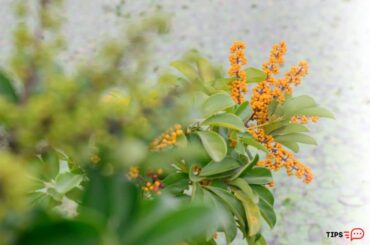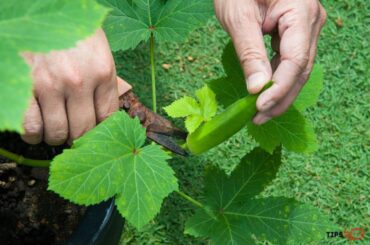For gardeners, fungal diseases are one of the most aggravating issues. If you do not have the knowledge about the eradication of the diseases and are unable to treat the diseased plants, the disease will spread over your entire garden, resulting in the loss of a valuable collection of your plants. But How to use fungicides on plants?

Fungicide application is the most effective strategy that you can employ to control fungal diseases in your plants. Accurate selection, application at the correct dose, and application at the correct time are all critical to achieving the intended results of fungicide use.
Cutting off the required amount of fungicide can cause more damage to your plants. Through this article, you will get to know some important facts that you must be aware of about fungicide use and How to use fungicides on plants.
Rules of thumb for fungicide application.
Before you use any fungicide, make sure to determine whether your plants need it or not. If you use a fungicide for a condition other than fungal infection, you may worsen the problem. Diagnose the disease correctly and select a fungicide accordingly. When you are using any fungicide, you should comply with all the instructions given by the manufacturer.
Avoid any off-label activities like mixing with other chemicals that are not allowed on the label, using higher doses, and so on. Make sure that the dose of fungicide you’re going to apply matches the dose stated on its label. Fungicide should be applied at the correct time and intervals to get the maximum results.
Generally, these doses and rates are recommended after extensive testing. Avoiding these recommendations will result in inefficient disease control. Even though the pathogen is destroyed, fungicides will not be able to repair existing symptoms.
A few fungicides are effective after fungi have invaded a plant. So, most of the time, application of fungicide is recommended before you notice any symptoms of a fungal infection. Simply, the use of fungicide to prevent the plants from getting infected would be the best way to go.
How to use fungicides on plants?
Application of fungicide before the development of the disease is often recommended. Though some fungicides (systemic fungicides) cure the disease, they cannot repair the damage that has occurred to the crop. This will be very critical when it comes to ornamental plants. Always remember prevention is the best.
Despite the site of application (foliage, entire plant, or soil), there are some common steps that must be followed when you are going to apply a fungicide.
- Diagnosis is the beginning. Determine the fungal disease that is afflicting your plant.
- Select a fungicide that effectively controls the particular disease. For example, the Bordeaux mixture is effective for powdery mildew and chlorothalonil is effective for anthracnose.
- To treat some fungal diseases, you may require specialized fungicides. For an instant disease, like powdery mildew needs a specialized fungicide. Make sure the crop that you’re going to treat is mentioned on the label of the product you are using.
- Decide the proper time of day for the application. It is best to apply the product when the temperature is above 40 but less than 90 degrees, the relative humidity is above 40 percent, and there is no wind.
- Wear personal safety equipment like goggles, gloves, boots, and a respirator.
- If you’re supposed to apply two different fungicides, check the labels of each before mixing them together. If not, apply them separately.
- Prepare the fungicide mixture. Check the label for the directions given by the manufacturer and prepare the mixture as per the directions.
After you’ve completed the steps above, follow the stages below for step-by-step directions on the application of fungicides to various sites of the plants.
Application of fungicides to foliage:
- Transfer the final fungicide mixture into a clean sprayer. Use a sprayer that suits your crop.
- Pay attention to using the proper kind of nozzle. Nozzles that produce too tiny droplets create very fine sprays that have less deposition on the target site.
- Spray the fungicide on the entire foliage. Ensure you are applying the fungicide to both the top and the bottom of the leaves. You should continue the application until it drips off the leaf.
- Continue the treatment at proper time intervals (normally 7 to 14 days). Check the label for the recommended time interval of the application. Generally, the use of shorter spray intervals would be ideal.
Application of fungicides to soil (soil drench method)
- Prepare the fungicide mixture as instructed by the manufacturer.
- Make a trench around the base of the plant about 2-3 inches deep and 4 inches wide.
- Pour the fungicide mixture into the trench evenly.
- Once the mixture is completely absorbed by the soil, fill the trench with soil.
- Reapply the product at the proper time intervals as mentioned on its label.
Keep in mind that you cannot manage soil-borne infections (e.g. root rot) with foliar sprays.
To the entire plant
- Here, you can follow the same procedure as for the application of fungicides to the foliage.
- During the preparation of the fungicide mixture, the volume should be sufficient enough to cover the entire crop.
- Direct air blast application is more efficient in covering the entire plant with a fungicide. If possible, get a support of a tunnel sprayer to apply the fungicide to the whole crop.
- Otherwise, you can use a normal sprayer that you use for foliar applications if the crop is small enough.
- Make sure you are covering all surfaces of the plant thoroughly to get good protection.

What time of day should you spray fungicide?
Accurate timing of the day for fungicide application is crucial to effective disease control. Here, the time of the day refers to the humidity and the temperature. Fungicide drift is affected by temperature and humidity. If you apply a fungicide at a high temperature and low humidity, you will lose some amount of the product due to evaporation or volatilization.
This may cause a reduction in the protective barrier that the plant was supposed to receive. In general, the application of the fungicide should be employed when the relative humidity is greater than 40 percent, and the temperature is less than 90 degrees. The wind direction should be consistent at the time of application. Ideal spraying conditions happen in the early mornings.
How long does it take for the fungicide to dry?
This depends upon the type of fungicide and weather conditions. When compared with hot weather, fungicides take more time to dry during wet weather. Often, fungicides tend to dry within two hours in warm, sunny, and windy conditions.
Can you spray fungicide on wet plants?
Systemic fungicides (absorbed by the plant) are absorbed by the plant and are less liable to wash off. So, their activity is not considerably affected by wet plant surfaces. In contrast, protectant fungicides (contact fungicides, e.g, copper, and sulfur) need to remain on the plant surfaces in order to perform their intended activity.
Wet surfaces discourage liquid-type protectant products from getting sticky on the surfaces; hence, sufficient protective cover may not be accomplished by applying liquid-contact fungicides on wet plant surfaces.
So, it is advisable not to spray protectant fungicides when the plant is wet. However, you can apply some products (e.g. granular fungicides) to wet plants. Ideally, whenever possible, apply the fungicide, especially contact ones, when the plants are dry.
How long does fungicide last after application?
Typically, when compared with systemic fungicides, contact fungicides persist on the plant over a shorter period of time. Due to the exposure to sunlight, heat, dew, rainfall, or irrigation water contact fungicides undergo degradation. In contrast, due to the redistribution and dilution inside the plant tissues with plant growth, the concentration of systemic fungicides may tend to decrease with time.
In general, contact fungicides are known to have 7 to 14 days of protection once applied, whilst systemic fungicides are having 7 to 21 days of protection. Depending on the product you are using and the environmental conditions, the effective time period of the fungicide can be varied.
What to do after applying fungicide?
To avoid washing the protective coating away, do not water your plants for at least 24 hours after applying a contact fungicide. However, you can water the plants after applying a systemic fungicide. Watering can facilitate systemic fungicides to reach the root rots of the plant. Carefully inspect your plants to see the effects of the fungicide applications.
Can you apply fungicide before it rains?
It will be better if you can apply fungicides before the rain, as it helps protect plants against fungal infections during wet periods. Although some portion of the fungicide gets washed off by the rain, it is good to apply fungicides before the rain. Foliar diseases are more common during wet weather. In order to infect foliage, fungi spores need water.
Rain makes leaf surfaces wet, giving favorable conditions for fungal infections, and it spreads fungi cells and spores within the plant and among the plants. This is why plants are more prone to fungal diseases during periods of wet weather. Therefore, if you can cover the leaf surfaces with a fungicide before a rain, plants will be more protected.
When it comes to systemic fungicides, they work better than contact fungicides during rainy periods as they are less susceptible to washing off by rain. Not like contact fungicides, systemic fungicides, are absorbed into the plant to perform their action against fungal pathogens. It is preferable if you can apply contact fungicides at least 24 hours before a rainstorm and systemic fungicides 1 to 2 hours before the rain.
In wet periods, you should apply the fungicides at the highest rate as stated on the label to achieve optimum results. Keep in mind that rain shortens the spray application intervals. This is due to the potential of washing off the fungicide by rain. This does not mean that after every rain you should apply fungicides. An appreciable portion of the product will remain sticky on the surface, performing its function in plant protection.
Can you put down too much fungicide?
Use of excessive levels of fungicides can damage your crop in the same way as not using enough. There are several consequences of the application of too much fungicide to plants. If you apply a fungicide at a higher dosage, fungi will develop resistance to that product. If this happened, the product would no longer be effective in controlling the disease, putting you in a situation to alter fungicide products more frequently.
Moreover, excessive levels of fungicides on plants are related to the occurrence of phytotoxicity. If absorbed in excessive concentrations, some fungicides, especially contact ones (e.g, copper) will damage the plant cells. High concentrations of certain chemicals derived from fungicides impair photosynthesis, which can lead to growth retardation and reduction in crop yield.
Avoid putting excessive levels of fungicides on plants. Always double-check the label of the product for dosing recommendations.
How long should you wait to fertilize after fungicide?
Once you have sprayed a liquid fungicide, you should wait at least 3 to 5 days to apply fertilizer. Fertilizer requires water to become active. If you apply fertilizer soon after applying a fungicide, there will be a potential to wash the fungicide away with irrigated water.
Ideally, it is a great practice to permit 1 to 14 days between fungicide and manure applications. This helps you examine the effects of various product applications on your plants.
Can you seed after using a fungicide?
It is possible to apply fungicide during seeding. There are soil-borne and seed-borne fungi pathogens that cause seed decaying, and seed germination problems. Those fungi pathogens can infect seedlings after germination. Therefore, if you are planting seeds without treating them with a fungicide, it will be beneficial to apply a proper fungicide to the soil.
This enables the protection of seeds and seedlings against a number of issues resulting from fungi invasions. However, if you are planting seeds after the application of a fungicide, particularly if it is not a soil-applied fungicide, be sure that is allowed by the manufacturer. Check the product label for the information.
Read Next : Can Fungicide Hurt Plants? ( Sometimes )




